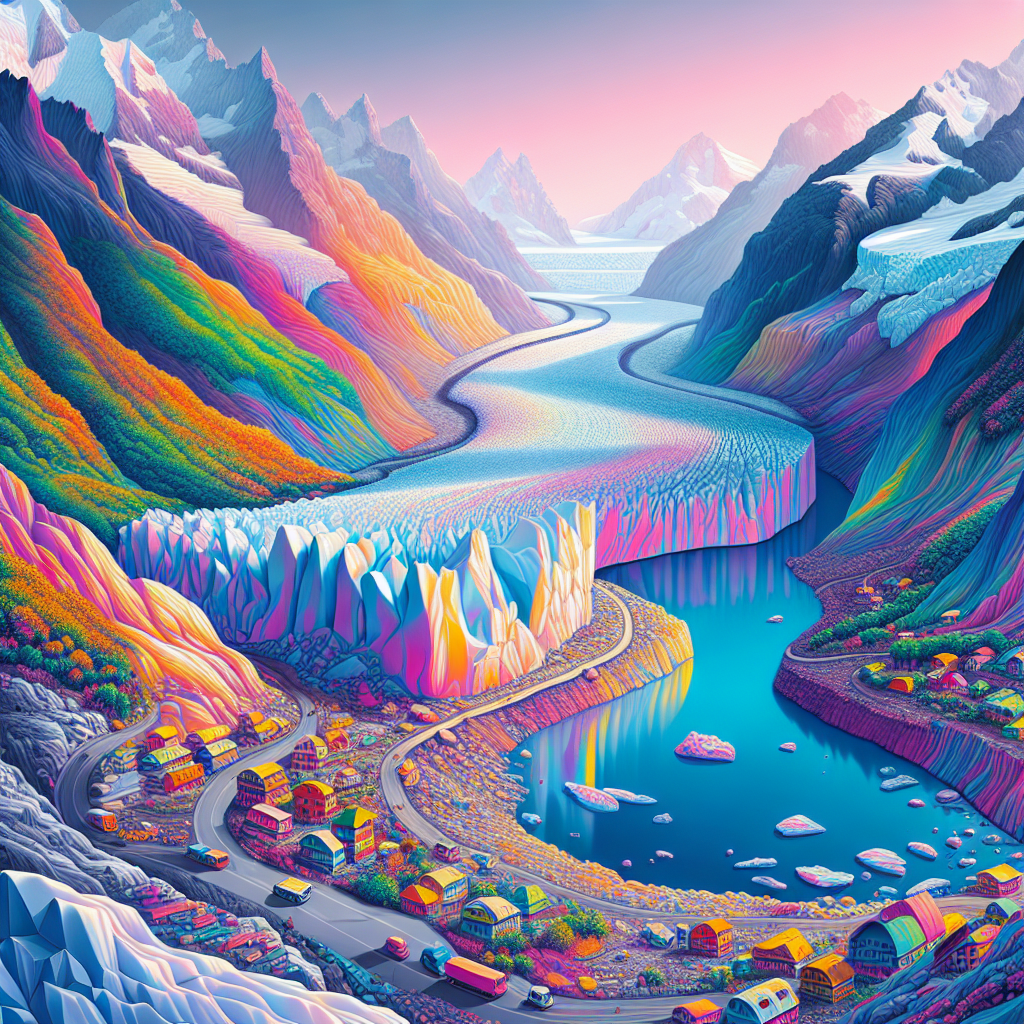The Gauli Glacier: A Melting Marvel in the Swiss Alps
Imagine a colossal river of ice, slowly creeping down the mountainside, a frozen giant in the heart of the Swiss Alps. This is the Gauli Glacier, a stunning natural wonder located in the Bernese Oberland region of Switzerland. The Gauli Glacier has been captivating adventurers and scientists alike for centuries. However, in recent years, it has become a symbol of the urgent environmental challenges we face today. As climate change accelerates, glaciers like Gauli are retreating at alarming rates, raising concerns about the future of our planet.
The Gauli Glacier is not just a breathtaking sight; it is a crucial part of the local ecosystem. Glaciers act as natural reservoirs, storing vast amounts of freshwater and releasing it slowly over time. This process is vital for maintaining river flows, especially during dry periods. The melting of glaciers like Gauli can lead to water shortages, affecting agriculture, wildlife, and human populations that rely on these water sources. The retreat of the Gauli Glacier is a stark reminder of the broader impacts of climate change on our environment.
While the scientific community is largely in agreement about the causes and consequences of climate change, there are still those who question the extent of human impact. Some argue that climate change is a natural phenomenon, pointing to historical periods of warming and cooling. However, the overwhelming consensus among scientists is that human activities, particularly the burning of fossil fuels, are driving the current changes at an unprecedented rate. The rapid retreat of glaciers like Gauli provides tangible evidence of these changes, making it increasingly difficult to deny the human role in climate change.
The Gauli Glacier also holds historical significance. In 1946, it was the site of a dramatic rescue operation when a US military plane crashed on the glacier. The incident, known as the Gauli Glacier crash, marked the first time helicopters were used in a mountain rescue, setting a precedent for future search and rescue missions. This event is a testament to the challenging and unpredictable nature of glacier environments, highlighting the need for careful navigation and respect for these powerful natural forces.
Efforts to address the retreat of glaciers like Gauli are underway, but they require global cooperation and commitment. Reducing greenhouse gas emissions is crucial to slowing the pace of climate change and preserving these vital natural resources. Renewable energy sources, such as wind and solar power, offer promising alternatives to fossil fuels. Additionally, conservation efforts and sustainable practices can help mitigate the impacts of climate change on vulnerable ecosystems.
The Gauli Glacier serves as a poignant reminder of the beauty and fragility of our natural world. It challenges us to reflect on our relationship with the environment and the legacy we wish to leave for future generations. While the task of combating climate change may seem daunting, it is essential that we take action now to protect the planet and its precious resources. The story of the Gauli Glacier is not just about a melting mass of ice; it is about the choices we make today and the impact they will have on the world tomorrow.

